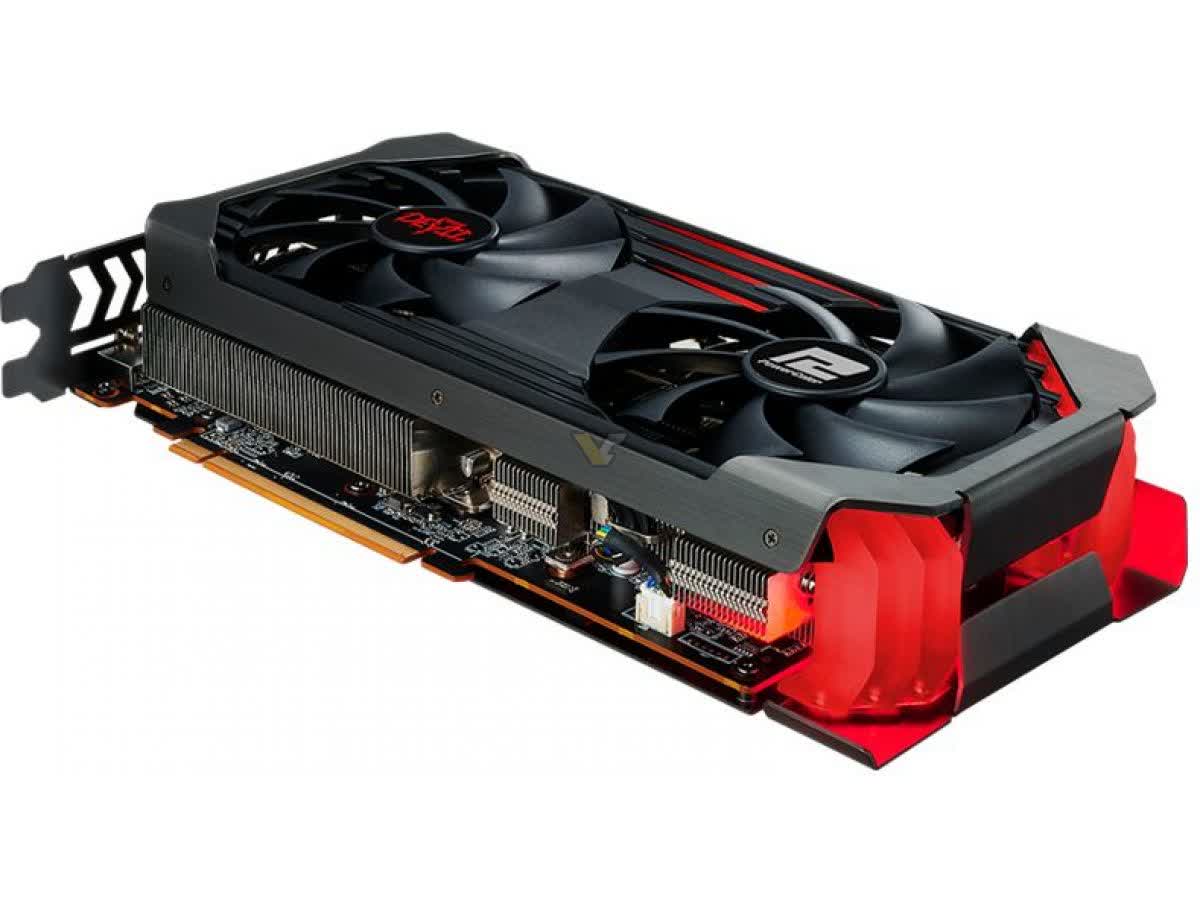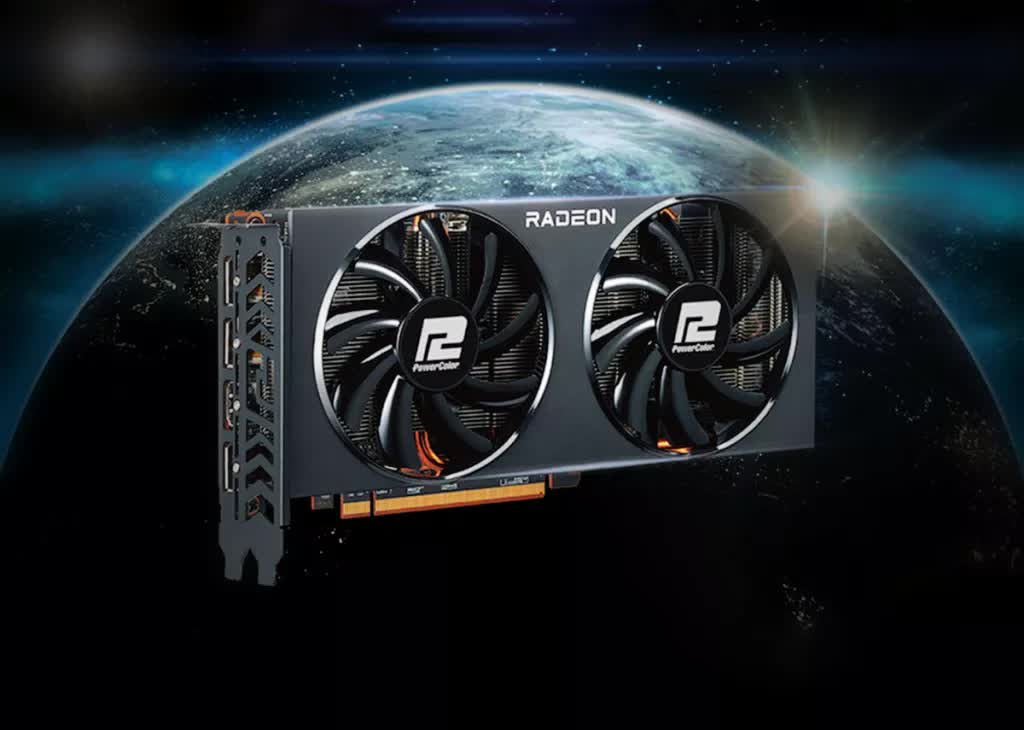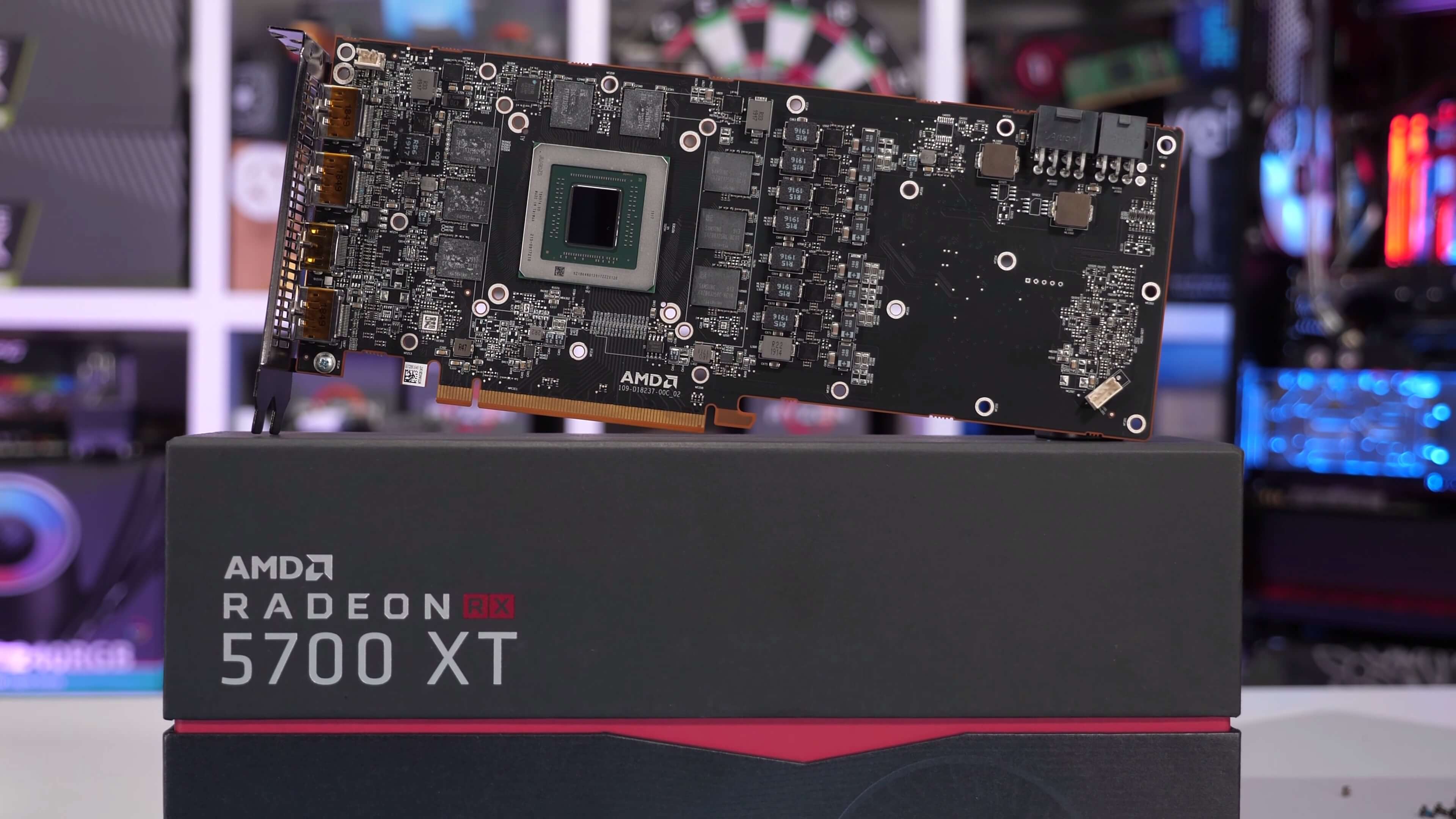Why it matters: The AMD Radeon RX 6600 XT has been on the market for just under a week now and we have a much better idea of how pricing and availability is shaking up after the card hit stores a day after our review. At launch, AMD made some bold promises around availability, now we'll be following up on those to see if AMD has actually delivered on what they said.
This matters because last time – when they launched the Radeon RX 6800 and 6800 XT – AMD got us on a phone call and spent some time telling us how these GPUs, which were out of stock and overpriced at the time, would be available from board partners at the MSRP in 4 to 8 weeks. That didn't turn out to be true, or at least a huge miscalculation of their own product's supply as even today those GPUs aren't available at the MSRP or regularly in stock at any price.
Before we take a look at how the 6600 XT actually ended up in the market, we should clarify the claims that AMD made to us. This time we didn't get any firm guarantees on timelines for availability, but AMD did say that cards would be available at the MSRP on launch day, and that supply would be decent enough to hopefully give a large portion of gamers an opportunity to purchase one. It seems that several other reviewers received similar messages from AMD and we also heard from retailers that supply of 6600 XTs was indeed looking reasonable.
Availability at launch
So were AMD's claims about being able to buy an MSRP 6600 XT at launch true? Well, for the most part. At least for a period of time on launch day. In Australia, for example, GPU shoppers were able to purchase an RX 6600 XT from PowerColor at our local MSRP of $590 AUD for several hours from the evening prior to the following morning. This was unlike most other GPU launches in recent memory, where cards would sell out virtually instantly, and MSRP cards would not be in stock for any reasonable amount of time.
We also heard multiple reports from users around the globe that availability was similar in their region, and multiple news outlets were covering the launch lauding the fact that new GPUs were being sold at reasonable prices with reasonable stock. In the United States, on launch day, it sounds like Microcenter as one example had PowerColor Fighter and Gigabyte Eagle models in stock at the $380 MSRP if you were willing to purchase one in store, while Newegg also sold some of these GPUs online, though it was through their Shuffle allocation system, along with many other cards of varying prices.

That was launch day though, which is only part of the story. It's all well and good to have a few cards available at MSRP on the day of release, but a bigger achievement is hitting the MSRP on a consistent basis moving forward. After all, a theme of these launches has been to release cards at the MSRP on a limited time basis to fulfill any launch promises, before jacking up the price for every other model. So how is the stock situation looking right now?
Honestly, not too bad in most regions. Here in Australia at multiple retailers you can still buy an RX 6600 XT, you'll just have to pay at least $100 AUD over the MSRP – which sounds like a large price inflation, but at ~20% over the $580 AUD MSRP, that's significantly lower for in-stock GPUs compared to other models. For example, if you want an RTX 3060 or RTX 3060 Ti, you'll need to spend at least $1,100, a massive $400 jump on the 6600 XT, which makes AMD's offering a comparatively good deal.
In the UK, at Overclockers.co.uk, they are reporting stock for cards like the Sapphire Pulse 6600 XT at a price tag of 380 pounds, which is a 15% price hike on the MSRP of 330 pounds, along with a few other similar models like the PowerColor Fighter and Sapphire Nitro+. Again, we're talking about several days after launch, and only seeing a modest price inflation on the MSRP.

In other regions like Germany it's much harder to buy a 6600 XT with basically all models out of stock at major retailers like Mindfactory and Caseking, so there does appear to be some regional discrepancies. Taking another random European country as an example we have Sweden at local retailer Inet and it's a bit different again, several models still in stock with prices as low as 5200 krona, which is a similar markup versus MSRP as other countries (noting that Sweden unfortunately gets rolled on local pricing as we've been told by local enthusiasts).
The US is unfortunately another case where stock has quickly evaporated from most retail stores. Places like Newegg are still sending their stock to the Shuffle, so it remains unavailable to purchase on demand like in other regions, regardless of price. You'll see the dreaded "out of stock" bundles on their website right now, and while you may have some luck at Microcenter if you have one near where you live, several days after launch, I wouldn't class it as "easy to purchase" if you want a Radeon 6600 XT in the USA.

That can give you an outlook of how stock is shaping up at this very moment, and like with many prior GPU launches, it does vary from region to region. At least today, if you live in one of the lucky countries with stock, if you wanted to buy a 6600 XT, it's possible with price inflation roughly 15 to 20 percent above the MSRP – which in USD would put the current retail price around the $450 mark.
The reason why there are cards still in stock in some regions is down to a couple of reasons. Speaking to retailers we are hearing a clear trend: board partners simply had a larger than usual amount of 6600 XT cards to sell. One retailer told us their launch allocation for just one model of the 6600 XT was larger than all launch allocation for Nvidia's RTX 3060 Ti, 3070, 3080 and 3090 GPUs combined. Stock levels have been described to us as generous considering the current state of the GPU market, and I think that's surprised some of these retailers which have allowed stock to remain on shelves for longer than usual.
More expensive models, price correction expected
There are bad news to share about pricing going forward though. While AMD said that cards will be available at the MSRP at launch, which does appear to have happened for at least a period after launch, it doesn't sound like you'll be able to easily find MSRP 6600 XTs in the future.
Retailers have told us that the base model cards you've seen at MSRP – the PowerColor Fighter being one example – are not expected to be restocked in any significant quantities or at all. The sentiment is that these "MSRP" cards were effectively a promotional price for launch day.
The sentiment is that these "MSRP" cards were effectively a promotional price for launch day.
We've been told the vast majority of expected future supply is being allocated to higher priced models, not necessarily the most premium 6600 XTs, but the next tier above the base model. Things like the PowerColor Hellhound and Red Devil, the Gigabyte Gaming OC, the Asus Dual... these are the cards that are most likely to be seen moving forward, with prices to match.

The good news is that availability for these mid-priced cards is looking pretty good in the future. I've heard of several more generous resupplies coming in the next few weeks, but that does appear to be at the expense of MSRP models. This is just based on our discussions with local retailers. But the expectation is that you should be able to buy an RX 6600 XT like AMD promised, but it won't be at the MSRP, it'll be at a modest markup above that price point. One retailer described this higher-than-MSRP retail price as the "real MSRP" based on expected future shipments.
As a quick summary, 6600 XT supply is looking decent at least for the short term, pricing is looking not great but okay, and AMD appears to be delivering on this occasion, though the reality of the situation isn't as rosy as suggested.
But is it any good?
The Radeon RX 6600 XT received a rather harsh 60/100 score in our review, but now that we know more about availability and street pricing, how does this affect our recommendation for the 6600 XT? We were certainly unimpressed with the MSRP, and said it was effectively a 5700 XT for 5700 XT pricing. But, you can't buy the 5700 XT at its launch price anymore – not even close – so where do things stand right now?

In most regions, the RX 6600 XT is by far the best value GPU you can buy from retail shelves. In Australia we're looking at prices starting at $700 which is inflated, but the nearest cards from Nvidia are the RTX 3060 and RTX 3060 Ti which surprisingly both go for around $1,100. In the case of the 3060 Ti, that means the Nvidia alternative is 57% more expensive for 20% more performance at 1440p, plus additional features like DLSS and superior ray tracing. That's far from a great value, and with similar margins seen in other regions, it's hard to justify the Nvidia option.
AMD's own 6700 XT looks like poor value compared to the 6600 XT. In Australia, you're faced with about a 60% price increase to go from the 6600 XT to the 6700 XT, for just a 30% improvement to performance at 1440p. Radeon RX 6700 XT prices have been increasing at retail for a few months now from what used to be a very attractive price point, but that's no longer the case with the 6600 XT in the picture.
There's no doubting that right now, the 6600 XT is the best value GPU you can currently purchase. But... it's still hard to recommend, isn't it?
I mean, all these comparisons are basically comparing one poo sandwich to another poo sandwich, and that's not the sort of sandwich I personally enjoy. Saying that one GPU is better value than another in this market doesn't mean a whole lot when almost every single card you can purchase is terrible, atrocious value. Where the 6600 XT ends up is basically being the least worst option, rather than a "best" value sort of product.
And that's because in a normal market with normal prices, it would be very hard to recommend a 6600 XT, when you'd pretty comfortably choose to buy the $400 GeForce RTX 3060 Ti instead. So it's hard not to feel ripped off in some way purchasing a 6600 XT at a price above the already mediocre MSRP. And I think this is why we're seeing 6600 XTs sit on shelves at above MSRP prices in some regions, and why retailers are reporting "underwhelming" sales to us.
What's next?
Beyond that, I think there are several other factors at play. First, how many people out there are looking to upgrade to a 6600 XT that provides cost per frame that is no better than the RX 5700 XT that launched in 2019?
Radeon 5700 XT owners have no incentive to upgrade. Or if you already own anything better than an RTX 2060 Super, the performance gain isn't significant enough. Even owners of the RTX 2060, you're looking at a 30% performance increase in the best case at 1080p, which isn't a large enough gain to tempt an upgrade right now.

To bother moving up to a 6600 XT you'd have to at least be an owner of something like a GTX 1660 Ti or an RX 590, or ideally an even lower end or older card, that's going to give you that ~50% performance improvement that typically justifies an upgrade. This would in a lot of cases mean moving up a price tier, if you'd previously been a 1660 Ti or GTX 1060 buyer you'd be used to spending $250-300 on a GPU, now you're facing spending at least $450 on an upgrade which is beyond the price range of mainstream customers.
The second factor is something we discussed in the Radeon RX 6600 XT review. High-end GPUs are still selling out at ridiculous prices because high-end buyers have the cash to spend and in some instances will just pay whatever it takes to get the level of performance they need, whereas more mainstream buyers are more patient and on the lookout for good deals.
AMD made a huge blunder advertising the 6600 XT as a 1080p GPU.
Another element that may have contributed to the flat reception of the 6600 XT is AMD's marketing. AMD made a huge blunder advertising the 6600 XT as a 1080p GPU. 1080p is a resolution for entry-level gamers, it's old school news, it's outdated outside of competitive gaming. Even if the card is actually decent at 1440p – and the 6600 XT is faster than an RTX 2070 at 1440p, so it's no slouch – advertising a $380 GPU (+ inflation) as a 1080p gaming card is quickly going to turn buyers away.

The 6600 XT doesn't make sense as an upgrade for many current GPU owners, especially those that already passed on this value proposition in prior years. It was released too late into a mid-range market that has become comfortable to waiting for the best value, and on top of that, it was advertised as a 1080p card in a price range where consumers expect better.
Right now we can only recommend the RX 6600 XT if you are desperate for a GPU, because to be fair it is the best value you can get on today's market. But if you've already got a half decent GPU, it might make sense to just keep those settings turned down a bit and keep waiting as you have been for months now until something great value pops up.
To get a much stronger recommendation, the RX 6600 XT needs to be priced at no more than $300 MSRP, ideally slightly lower, and then with the current ~20% price inflation, an actual retail price of $360 would be easier to digest. The GPU would offer greater value card in its own right, and much better than highly inflated competitors, but as it stands right now, it simply doesn't feel like it's the winner AMD was hoping for.
